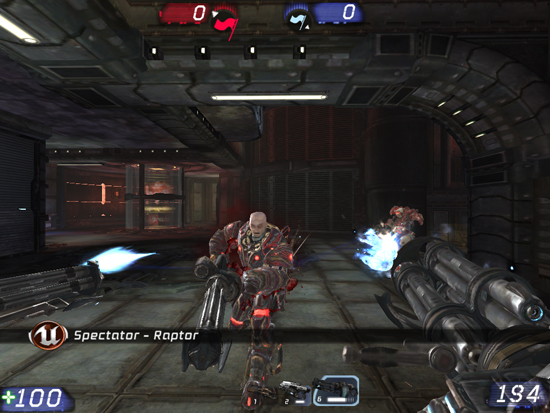AMD 780G: Preview of the Best Current IGP Solution
by Gary Key on March 10, 2008 12:00 PM EST- Posted in
- CPUs
Quick Thoughts
The AMD 780G platform offers significantly lower CPU utilization rates than the G35 in our H.264 playback tests while jockeying back and forth with the GeForce 8200. VC1 and MPEG-2 playback was certainly lower on the 780G/GeForce 8200 platforms, though the G35 was at least in the same ballpark. Intel has made some strides with the 15.8 drivers in regards to MPEG-2 playback and overall image quality. Our experiences with the 15.9 driver are even better, but we will have to wait until the G45 for a true competitor to the AMD chipset previewed today when comparing hardware accelerated decode capabilities.
More important than the raw numbers is that throughout testing, neither the 780G nor GeForce 8200 once experienced pausing, judder, or outright blank screen events - something we cannot say about the G35. Certainly, our processor choices have a significant impact on CPU utilization rates, but considering our two choices are priced equally we have to give the nod to AMD for having a better media solution in this price range. As far as power consumption goes during H.264 playback, the AMD platform averaged 106W, NVIDIA platform at 102W, and the Intel platform averaged 104W - too close to really declare a true winner.
The G35 and GeForce 8200 certainly hold an advantage when it comes to providing multi-channel LPCM audio over the HDMI interface, and that one item is enough for us to go back to our original opening comments that AMD got it right... almost right. From an HTPC perspective, it is hard to argue with the video results from the HD 3200, but the audio capabilities of the G35 and GeForce 8200 still sway us at times to the other side.
After testing nearly non-stop over the past two weeks, we think the 780G is the better overall solution and are still amazed that AMD made such a significant jump in IGP performance in such short time. Our comments come from reviewing the results from close to two dozen benchmarks and a general maturity in the platform at this moment, something we could not have said when our first boards arrived a few weeks ago.
The only wild card at this point is the NVIDIA GeForce 8200 as it appears to be very close to the 780G in multimedia performance, but gaming and application capabilities are lagging a little in early testing. Whether this is due to an immature BIOS, chipset limitations, or drivers is up for debate at this point (Ed: calling 1-800-NVIDIA, please pick up). We will have full results for this chipset in our roundup, but considering most boards based on the MCP78 are not due for another month, we have to tip our hats to AMD for better market execution at this point.
The Intel G35 platform will show its strength in areas like office applications and video/audio encoding thanks to the Core 2 processor family. However, it has an Achilles heel that keeps it from being an all around champion. Besides dismal H.264 decoding abilities with low-end processors, casual gaming is an almost complete disaster on this platform. This is an area we will report on thoroughly in our next article. In the meantime, we leave you with these screenshots to ponder which platform is best suited for that casual gamer in the household.
Unreal Tournament 3 - 1024x768 Medium Quality Settings
 780G at 24.3 FPS - Click to Enlarge |
 G35 at 2.6 FPS - Click to Enlarge |
 GeForce 8200 at 19.2 FPS - Click to Enlarge |










49 Comments
View All Comments
derek85 - Tuesday, March 11, 2008 - link
You certainly don't know anything about multimedia.With a 780G + Phenom + 2ch DDR2-667 or 800 you are getting almost full HDHQV scores; with 8300GS the memory on those cards are severely limited to single channel DDR2-800 and you are not getting ANY HDHQV features, the image quality would be very poor in comparison, and there is no way to remedy that no matter how powerful your CPU is.
You said Phenom is not a good overclocker, and I agree with that, but what you got wrong is the market that 780G is aiming at. At this price point most people would never look at overclocking their PC, heck the average joe out there probably don't even know what's actually inside their computer case. The 780G will make a very good platform for everyday as well as a HTPC, and I'm sure it will be a good pick for OEMs.
derek85 - Tuesday, March 11, 2008 - link
Guess I hit enter button too soon...What I was trying to say is 780G excels in multimedia and will make its way into a damn good budget PC. You are looking at $50-60 saving in an entry level discrete graphics card, and probably $20-30 more on the motherboard at current running price for 780G. 780G will also do just fine in light gaming and usual productivity tasks. It can score 1600+ in 3DMark06, and a 8400GS is not going to do any better than that.
gochichi - Tuesday, March 11, 2008 - link
OK, so I'm excited for AMD. This kind of makes them really feasible again. I mean, for the price of a cheap video card... they throw in a free (and pretty decent) motherboard.I once read that some AMD official (maybe even the president, don't remember) thought that things are so tight in the CPU industry that it's a lot more profitable to make CPU cooling.
Well??? C'MON! There is currently no mainstream HTPC system. AMD could really sell these IF they could sell it even more as a platform. Why leave it up to so-far so-chintzy 3rd parties to make something decent.
What I would like to see is a "genuine" AMD thin case, with a power supply and a new type of AMD chip that comes with a flatter CPU cooler. All I want is space for one harddrive, and one 5.25" drive... make it as tight and slick as possible, and make it relatively affordable. Why not?
I mean, I know it won't happen. But it should. This promises tighter integration, and I believe that making this integration visible to the consumer via a slick AMD-branded case (work with Antec, Lian-Li or just AMD) that draws attention to the near console price that you can now build a system with.
Also, because Vista is so expensive to the people building their own machine. It is critical for them to offer splendid Linux support. If I knew it was plug & play with the next Ubuntu including audio through HDMI... that would sell it to me all over again.
AMD ALMOST has the price-point going on. Vista messes that up, expensive and UNIMPRESSIVE cases/power supplies messes that up as well.
Do you people realize that a Mac Min is currently the cheapest slick-form factor computer available??? How can that be? Apple is EXPENSIVE!?! It doesn't need to be ridiculously small... but slicker than the crap that's available.
Asus makes something like I have in mind but it's ran on Intel and is expensive as all get out.
AMD... give us the humble little platform that could. You're SO close now.
JarredWalton - Tuesday, March 11, 2008 - link
You know, I reviewed an Aopen MiniPC a long time ago. I burned out one fan in the process of a one month review. Okay, sure, I was stress-testing with Folding@Home, but that still gives me pause. Then I got a new fan, finished the review, and about two months later (without stress testing) the second fan gave out! I'd assume the Mac Mini is doing better than Aopen, since I haven't heard any uproar, but then I don't follow Macs much.More to the point, going *small* has some potential drawbacks. After initially being impressed by SFF and other small systems, I'm pretty much done with them now. uATX is more or less viable, but if you're looking for long-term reliability and don't want overheating and premature part failures, I would stick with a decent ATX case. The uATX stuff just never seems quite as robust after a couple years of use, IMO.
gochichi - Tuesday, March 11, 2008 - link
The Mac Mini wannabe that you're talking about was not what I had in mind. What I am saying is that buying a Mac Mini, and installing Windows Vista for $100.00 is still cheaper than most small/slick form factors.Now, Mac Mini is absurdly small (it's very well executed, and reliable as hell, but the slow harddrive etc is absurd IMHO). I'm suggesting something 8 times as big or so (2 mac minis tall, 4 per layer-ish). Just make it slick. It's REALLY not that hard!
I keep thinking I should just cast an aluminum case from scratch b/c the market is that lame. The few cases that aren't lame are over priced as hell. I suppose the really small HP is fine, (perfect even in terms of size/$/sacrifices). But what about the people that want to buy something from scratch and not undergo armed robbery and chintziness all at the same time.
AMD is unable to take things to the next level. This new vision of "lets not beat Intel in performance/$" COULD work, but it would need a gimmick. They are definitely missing that gimmick although this new chipset came close.
The only actual contribution to the world that this chipset has made is that Intel will beat it (or compete with it) and since Intel has stellar Linux support, better CPUs, and better battery life on laptops etc... that will be good. I really only need so much from a graphics card most of the time, and this 780G covers NEEDS.
phusg - Tuesday, March 11, 2008 - link
What's wrong with Shuttle SFF PC's? Sure the internal PSU crapped out on me after a few years, but I think mine looks pretty good.I do agree with your parent post though that SFF isn't really worth the hassle in a lot of cases. A HTPC is often accompanied by an AV Receiver and TV that are often both easily as big as ATX, so what's the point in going small for the PC component? I'm currently building a recylcled ATX machine as a HTPC to replace my Shuttle and am sure I will love the extra expansion slots, cooler temps and quieter operation. If AMD would just make a decent AGP driver release all will be good again...
JarredWalton - Tuesday, March 11, 2008 - link
What's wrong? I suppose it all depends on the TLC you give your computer. I'd *never* recommend overclocking Shuttle - or any other - SFFs. I did that in my early SFF reviews. Some of those systems I kept overclocked (and we're talking mild 10-20% overclocks), and most would fail within a year. Even *without* overclocking, nearly every SFF I've ever used failed in some manner before two years was up.Shuttle did better in this regard than others, but the long-term prospects are pretty poor. I had several motherboards fail (will no longer POST at all). I've had fan controllers fail on at least two units - still usable, but now you need to plug into a regular Molex connector and run the fan at 100%. PSUs have failed on maybe 1/3 of the SFFs I've used (within a two year period - most last at least a year).
The real issue with the above is that all SFFs are proprietary, so when something inevitably *does* fail, you get raped on price a second time. And taking the motherboard or PSU out of an SFF is not nearly as easy as in a uATX/ATX system. If you want the wiring to look nice again - which is actually critical in such a small chassis since it affects airflow - you're looking at many hours of work.
gochichi - Tuesday, March 11, 2008 - link
Building a computer on the cheap, doesn't add up anymore.AMD would be wise to partner up and make a conveniently priced, conveniently sized, platform. Because if the price is right and it's convenient then their performance deficit is not important.
sprockkets - Thursday, March 13, 2008 - link
They could always release a DTX board, like they said over a year ago.panfist - Tuesday, March 11, 2008 - link
Will it be worth waiting for a 790GX? Or if I want that much performance, just go with discrete graphics that's better than hybrid crossfire anyway?What's the best AMD HTPC board that uses discrete graphics?